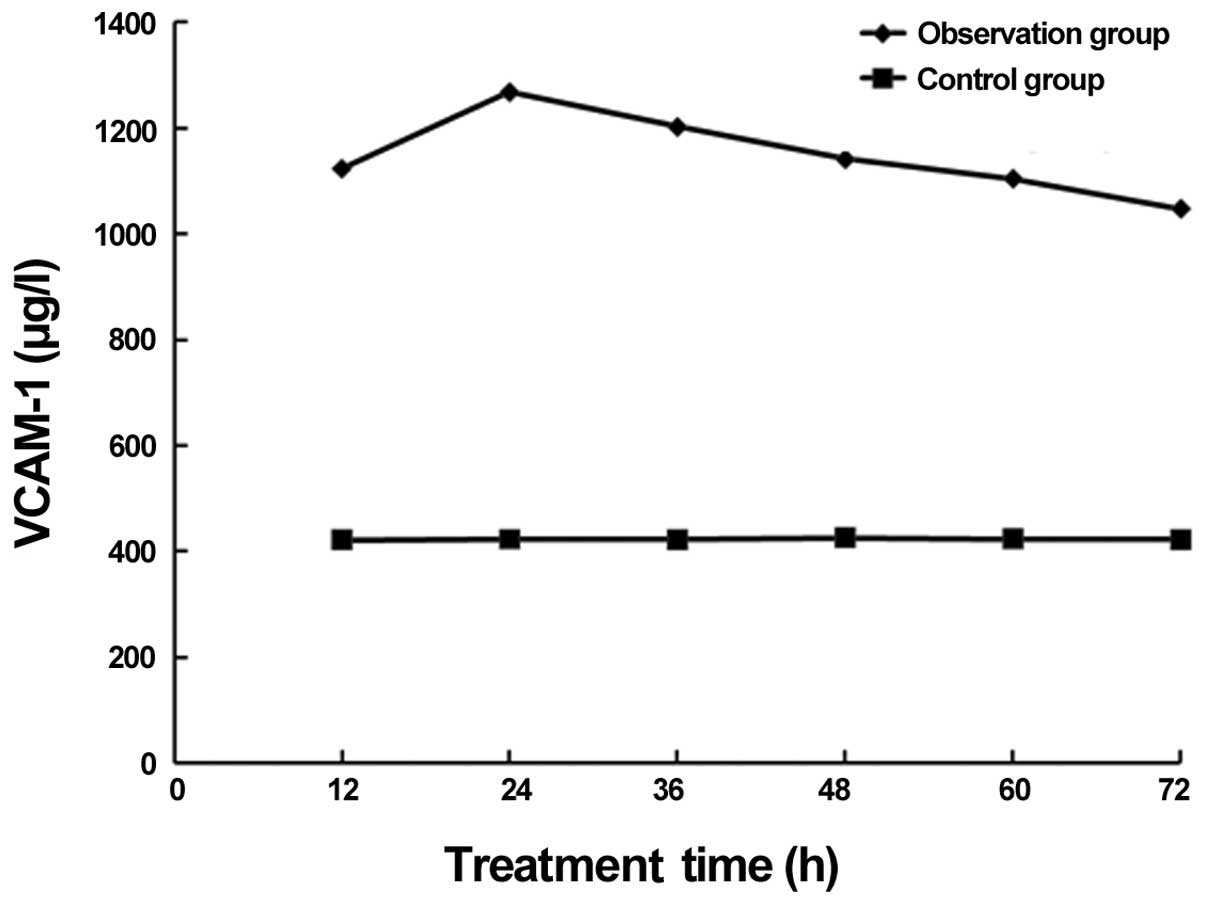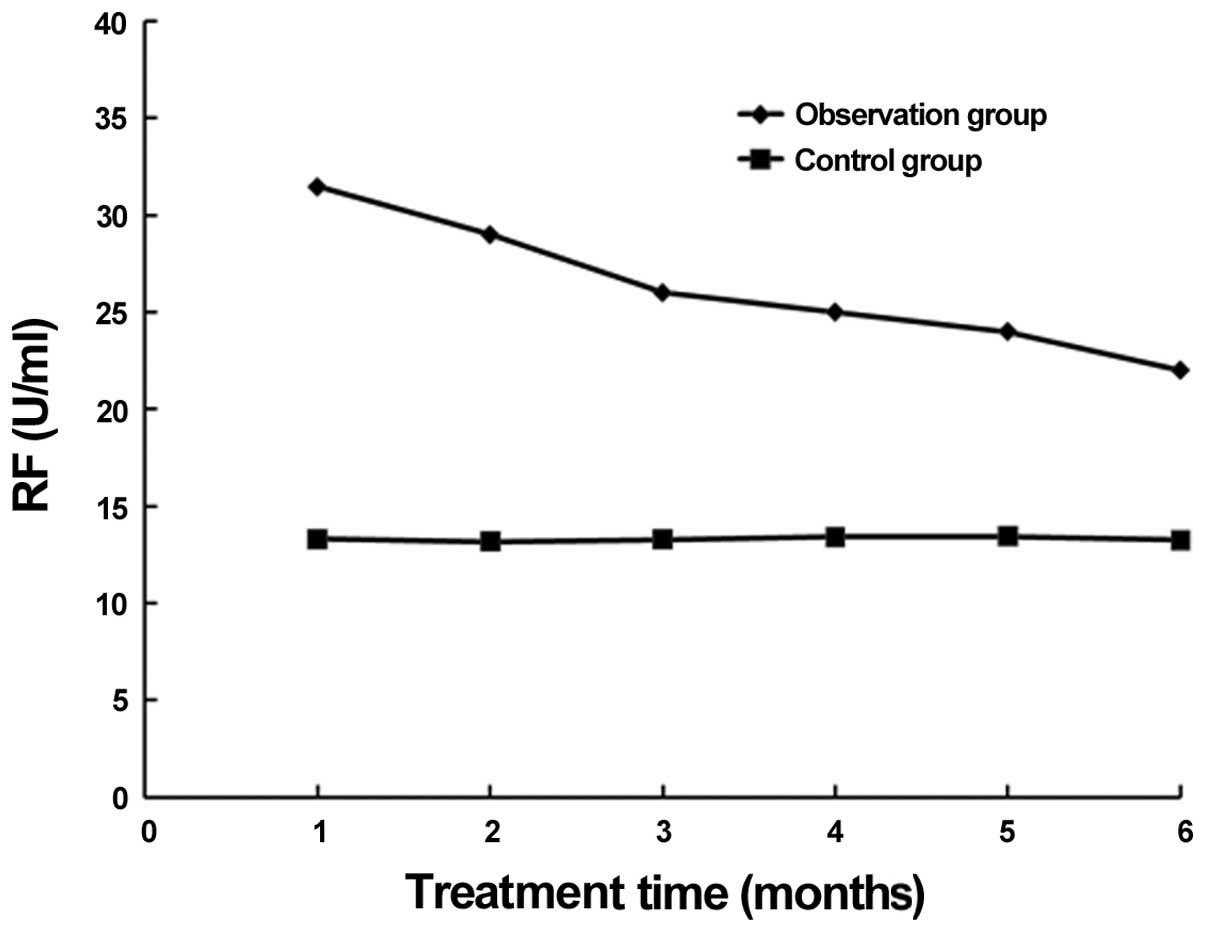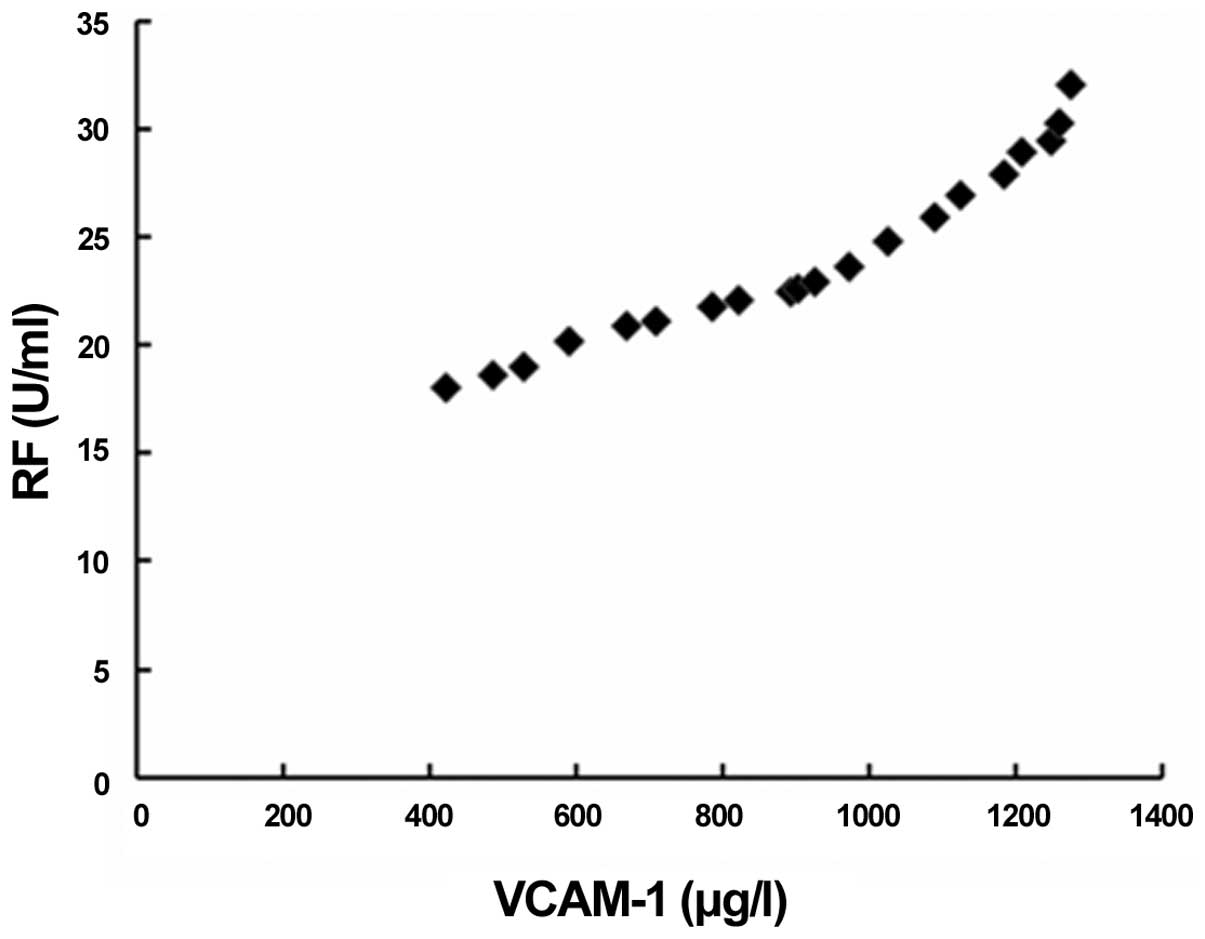|
1
|
Paccou J, Boudot C, Renard C, Liabeuf S,
Kamel S, Fardellone P, Massy Z, Brazier M and Mentaverri R: Total
calcium-sensing receptor expression in circulating monocytes is
increased in rheumatoid arthritis patients with severe coronary
artery calcification. Arthritis Res Ther. 16:4122014. View Article : Google Scholar : PubMed/NCBI
|
|
2
|
Oiwa H, Mihara K, Kan T, Tanaka M, Shindo
H, Kumagai K and Sugiyama E: Grade 3 lymphomatoid granulomatosis in
a patient receiving methotrexate therapy for rheumatoid arthritis.
Intern Med. 53:1873–1875. 2014. View Article : Google Scholar : PubMed/NCBI
|
|
3
|
Inoue M, Yanaihara N and Okamoto A:
Salmonella ovarian abscess in a patient with rheumatoid arthritis
(RA): A case report with literature review. Clin Exp Obstet
Gynecol. 41:465–467. 2014.PubMed/NCBI
|
|
4
|
Witkowski JM: Mechanisms of the immune
system in ageing and some age-associated diseases. Postepy Biochem.
60:233–239. 2014.PubMed/NCBI
|
|
5
|
Li G, Shi F, Liu J and Li Y: The effect of
CTLA-4 A49G polymorphism on rheumatoid arthritis risk: A
meta-analysis. Diagn Pathol. 9:1572014. View Article : Google Scholar : PubMed/NCBI
|
|
6
|
Sharma JN: Basic and clinical aspects of
bradykinin receptor antagonists. Prog Drug Res. 69:1–14.
2014.PubMed/NCBI
|
|
7
|
Yaman A, Karabag F, Demir S and Koken T:
Changes in serum asymmetric dimethylarginine and endothelial
markers levels with varying periods of hemodialysis. Ther Apher
Dial. 18:361–367. 2014. View Article : Google Scholar : PubMed/NCBI
|
|
8
|
Mlinar LB, Chung EJ, Wonder EA and Tirrell
M: Active targeting of early and mid-stage atherosclerotic plaques
using self-assembled peptide amphiphile micelles. Biomaterials.
35:8678–8686. 2014. View Article : Google Scholar : PubMed/NCBI
|
|
9
|
Zheng Y, Yang W, Aldape K, He J and Lu Z:
Epidermal growth factor (EGF)-enhanced vascular cell adhesion
molecule-1 (VCAM-1) expression promotes macrophage and glioblastoma
cell interaction and tumor cell invasion. J Biol Chem.
288:31488–31495. 2013. View Article : Google Scholar : PubMed/NCBI
|
|
10
|
Navarro-Hernández RE, Oregon-Romero E,
Vázquez-Del Mercado M, Rangel-Villalobos H, Palafox-Sánchez CA and
Muñoz-Valle JF: Expression of ICAM1 and VCAM1 serum levels in
rheumatoid arthritis clinical activity. Association with genetic
polymorphisms. Dis Markers. 26:119–126. 2009. View Article : Google Scholar : PubMed/NCBI
|
|
11
|
Alarcón GS, Blackburn WD Jr, Calvo A and
Castañeda O: Evaluation of the American Rheumatism Association
preliminary criteria for remission in rheumatoid arthritis: A
prospective study. J Rheumatol. 14:93–96. 1987.PubMed/NCBI
|
|
12
|
Ariza R, Van Walsem A, Canal C, Roldán C,
Betegón L, Oyagüez I and Janssen K: Cost-minimization analysis of
subcutaneous abatacept in the treatment of rheumatoid arthritis in
Spain. Farm Hosp. 38:257–265. 2014.PubMed/NCBI
|
|
13
|
Kobelt G: Treating to target with
etanercept in rheumatoid arthritis: Cost-effectiveness of dose
reductions when remission is achieved. Value Health. 17:537–544.
2014. View Article : Google Scholar : PubMed/NCBI
|
|
14
|
Yokogawa N, Kaneko T, Nagai Y, Nunokawa T,
Sawaki T, Shiroto K, Shimada K and Sugii S: Validation of RAPID3
using a Japanese version of Multidimensional Health Assessment
Questionnaire with Japanese rheumatoid arthritis patients:
Characteristics of RAPID3 compared to DAS28 and CDAI. Mod
Rheumatol. 25:264–269. 2015. View Article : Google Scholar : PubMed/NCBI
|
|
15
|
Nazarinia M, Jalli R, Kamali Sarvestani E,
Farahangiz S and Ataollahi M: Asymptomatic atlantoaxial subluxation
in rheumatoid arthritis. Acta Med Iran. 52:462–466. 2014.PubMed/NCBI
|
|
16
|
Ponchel F, Burska AN and Vital EM:
Pharmacogenomics in rheumatoid arthritis: How close are we to the
clinic? Pharmacogenomics. 15:1275–1279. 2014. View Article : Google Scholar : PubMed/NCBI
|
|
17
|
Morgan MJ, Gamez G, Menke C, Hernandez A,
Thorburn J, Gidan F, Staskiewicz L, Morgan S, Cummings C and
Maycotte P: Regulation of autophagy and chloroquine sensitivity by
oncogenic RAS in vitro is context-dependent. Autophagy.
10:1814–1826. 2014. View Article : Google Scholar : PubMed/NCBI
|
|
18
|
Cheng T, Wang M, Chen Z, Eisenberg RA,
Zhang Y, Zou Y, Deng Y, Wang M and Zhou L: Tartrate-resistant acid
phosphatase 5b is a potential biomarker for rheumatoid arthritis: A
pilot study in Han Chinese. Chin Med J (Engl). 127:2894–2899.
2014.PubMed/NCBI
|
|
19
|
Li S, Yu Y, Yue Y, Zhang Z and Su K:
Microbial infection and rheumatoid arthritis. J Clin Cell Immunol.
4:1742013.PubMed/NCBI
|
|
20
|
Hafström I, Engvall IL, Rönnelid J, Boonen
A, van der Heijde D and Svensson B: BARFOT study group: Rheumatoid
factor and anti-CCP do not predict progressive joint damage in
patients with early rheumatoid arthritis treated with prednisolone:
A randomised study. BMJ Open. 4:e0052462014. View Article : Google Scholar : PubMed/NCBI
|
|
21
|
Tan TW, Chou YE, Yang WH, Hsu CJ, Fong YC
and Tang CH: Naringin suppress chondrosarcoma migration through
inhibition vascular adhesion molecule-1 expression by modulating
miR-126. Int Immunopharmacol. 22:107–114. 2014. View Article : Google Scholar : PubMed/NCBI
|
|
22
|
Mei H, Campbell JM, Paddock CM,
Lertkiatmongkol P, Mosesson MW, Albrecht R and Newman PJ:
Regulation of endothelial cell barrier function by antibody-driven
affinity modulation of platelet endothelial cell adhesion
molecule-1 (PECAM-1). J Biol Chem. 289:20836–20844. 2014.
View Article : Google Scholar : PubMed/NCBI
|
|
23
|
Persidsky Y, Steffan AM, Gendrault JL,
Royer C, Beyer C, Muchmore E, Kim A and Aubertin AM: Morphological
changes in lymph nodes and expression of VCAM1 and cytokines at the
late stages of SIV-induced disease in rhesus monkeys. Res Virol.
146:185–200. 1995. View Article : Google Scholar : PubMed/NCBI
|

















